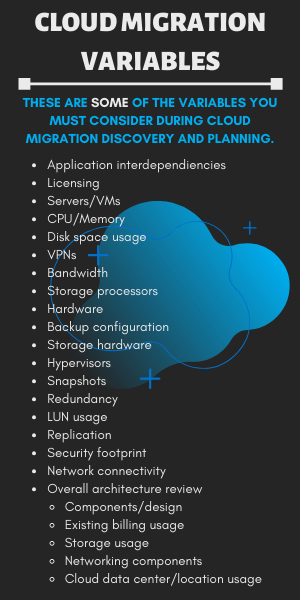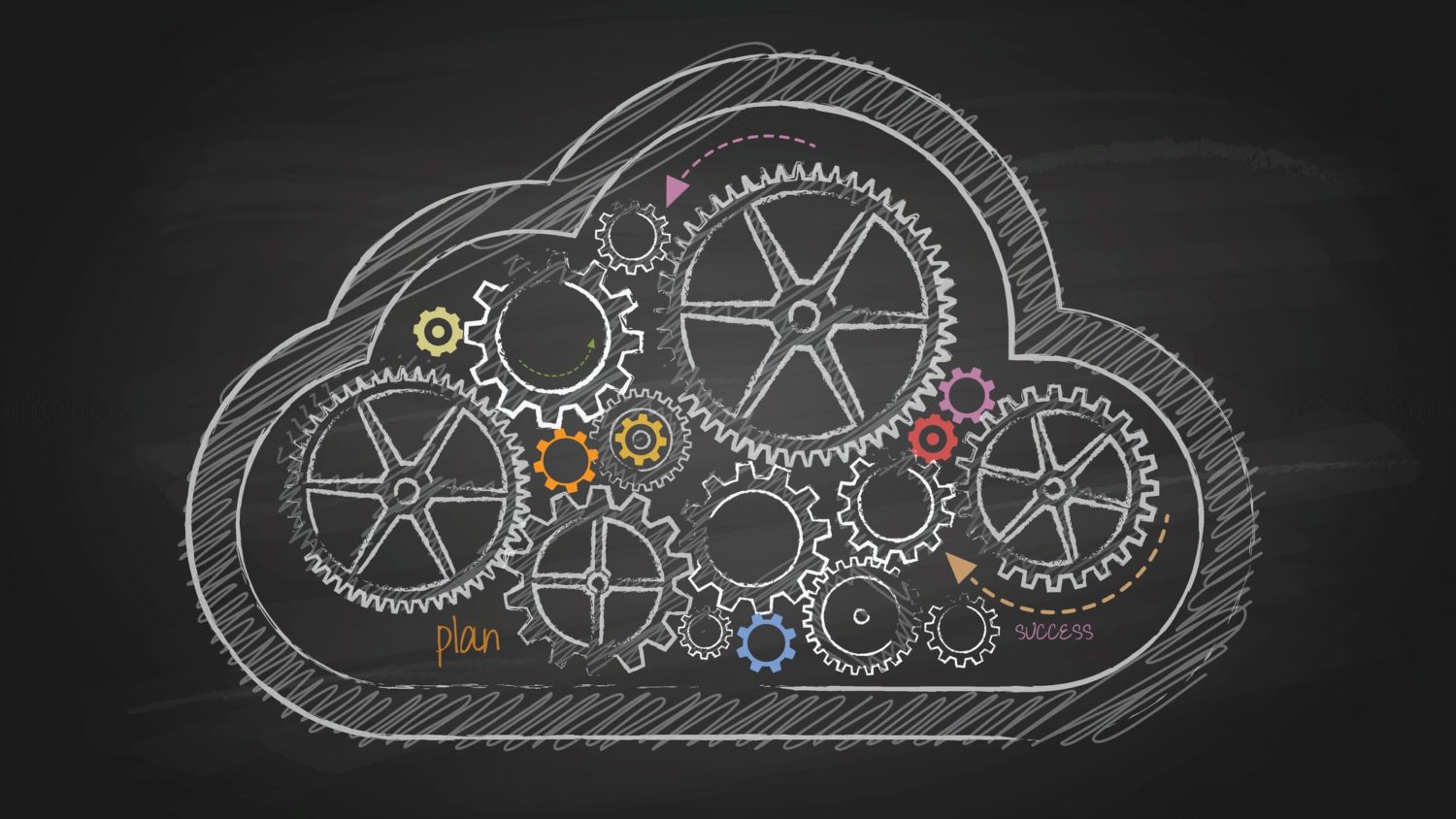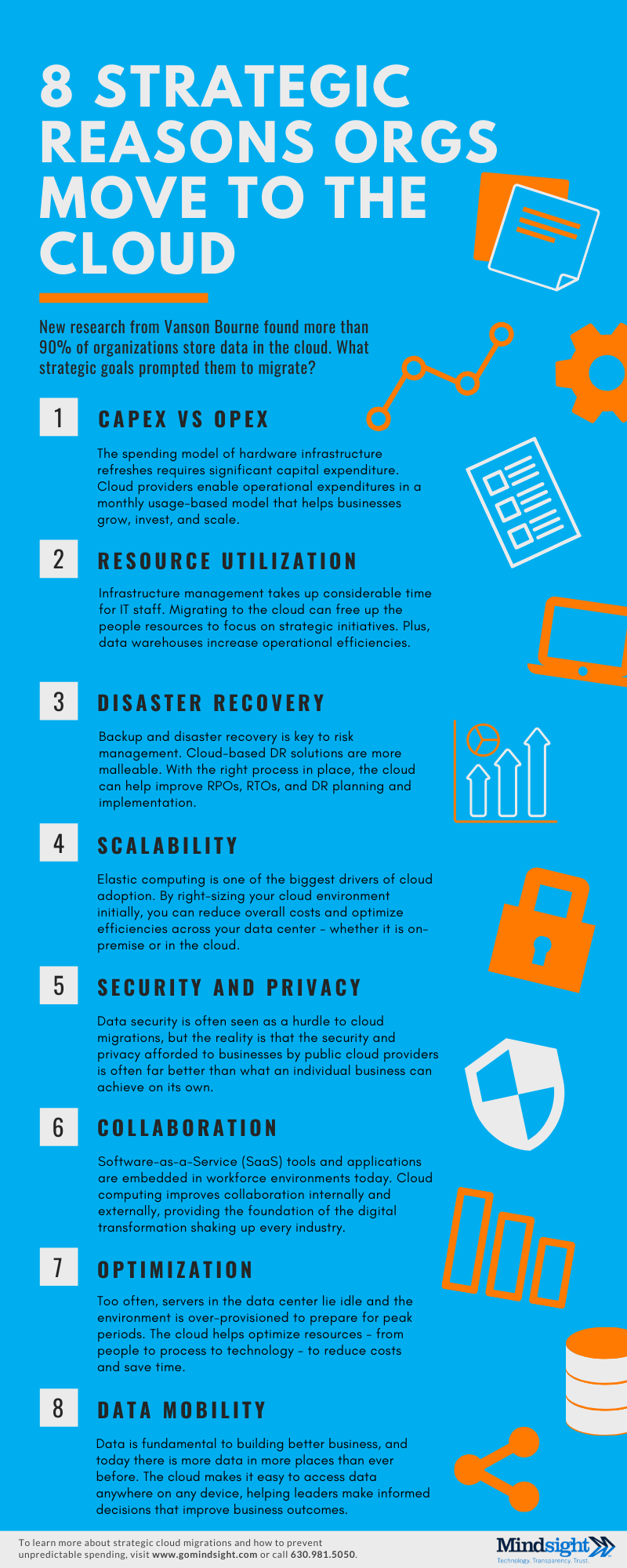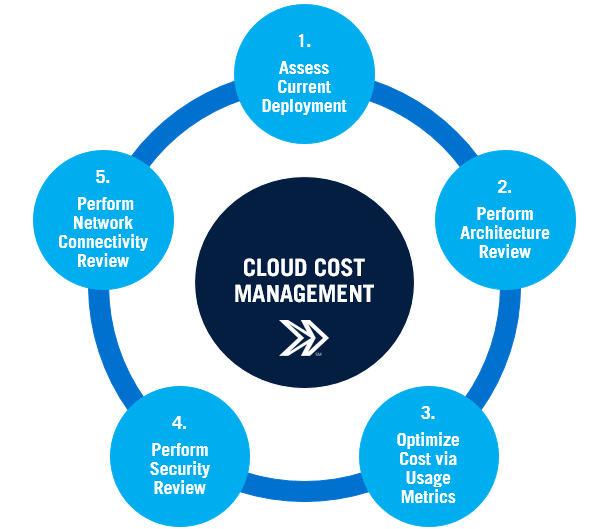February 11, 2020 by Siobhan Climer and Mike Czerniak
One of the largest drivers of cloud migrations is a desire to reduce infrastructure costs. Instead of buying and maintaining new hardware, simply put it all in the cloud. Wipe your hands and be done with it. Right?
 It’s never that simple. We recently reported on the phenomena of cloud repatriation – businesses moving back on-premise after a poorly optimized migration. Organizations that engaged in cloud repatriation reported less cost savings than anticipated, and they also found that managing workloads in the cloud was a different challenge than managing them on-prem.
It’s never that simple. We recently reported on the phenomena of cloud repatriation – businesses moving back on-premise after a poorly optimized migration. Organizations that engaged in cloud repatriation reported less cost savings than anticipated, and they also found that managing workloads in the cloud was a different challenge than managing them on-prem.
So, how can business make achieve cloud cost management?
Here’s how to do it.
Identify Goal Of Cloud Migration
Too often dissatisfied cloud users fail to understand the purpose of moving to the cloud. A vague “everyone’s doing it” or “it’ll save us money” or “I don’t want to upgrade our hardware anymore” isn’t enough.
An optimized cloud migration is strategic. It usually isn’t – and shouldn’t be – a lift and shift switch. What is your business truly trying to achieve with a cloud migration? Are you hoping to increase flexibility and scalability? Will a cloud migration improve data security and backup policy procedures?

Whatever the purpose of the cloud migration, it is important that you map the migration to specific business goals so you can reign in scope creep and ensure cloud cost management.
8 Strategic Reasons Organizations Move To The Cloud
Plan The Migration With Purpose…
Key to optimizing a cloud migration – and, therefore, saving time and money – is planning. Think of it this way. If the goal is to achieve cloud cost management, you need to predict. To predict, you need to know as many variables as possible.
 Determining what variables matter is half the battle when it comes to planning a cloud migration. From the VMs and memory, disk space usage and VPNs to storage hardware, processors, redundancy, LUN usage, snapshots, and replication – every aspect needs to be considered prior to a migration.
Determining what variables matter is half the battle when it comes to planning a cloud migration. From the VMs and memory, disk space usage and VPNs to storage hardware, processors, redundancy, LUN usage, snapshots, and replication – every aspect needs to be considered prior to a migration.
While the variables may be overwhelming, taking a health check of your current deployment is necessary to moving forward. “You can’t improve what you don’t measure,” is certainly true in this case.
Once you have a detailed understanding of how each infrastructure element acts in your current environment, you can better determine how you want each variable to act in your migratory environment.
Aligning these variables to your goals is key to optimizing cloud cost management.
…Then Document It!
Referenceable and executable documentation is an important part of this discovery and planning period and helps with preventing scope creep later on in the process.
By taking the time to consider all variables, document them, and then align variables to strategic goals, businesses can ensure the pricing structure of a cloud services model is predictably lower.
How do you document your cloud migration process? Mindsight uses a custom-built server matrix to track application interdependencies, ensuring the migration is smooth and seamless.
A Note On Right-Sizing The Environment
One of the biggest mistakes companies make when migrating to the cloud is right-sizing the cloud environment. The lack of planning in this area is a key contributor to overspending.
Achieving a best-fit cloud configuration means optimizing compute, storage, and network settings, while at the same time negotiating a strategic pricing plan that maximizes performance.
Businesses that prioritize right-sizing cloud instances can cut public cloud costs by as much as 40%, according to CIO.com. To right-size successfully – without impacting performance or capability – you have to understand the application and workload environment in detail.
Right-sizing your cloud environment is a clear step towards measurable ROI and cloud cost management.

Cloud Cost Management Is Achievable
IDG Enterprise found that 42% of more than 900 IT decision makers agree that lowering total cost of ownership is a key driver behind most cloud initiatives.
Yet keeping cloud costs under control isn’t so simple. Too often, a DevOps-led cloud deployment or lack of operational visibility leads to ballooning public cloud costs.
Whether you are still assessing a cloud migration or are hoping to optimize your current deployments, it is important to assess your current deployments, perform an architecture review, ensure cost optimization via usage metrics, secure your cloud environments, and assess overall connectivity.
Mindsight Can Get You There
Lower cloud costs? Optimized performance? A strategic cloud deployment clearly linked to business goals?
With the help of Mindsight’s cloud discovery and deployment experts, you can achieve these objectives. Sign up today for your cloud insights report and mini assessment and take the first steps towards improved cloud cost management and performance optimization.
Like what you read?
Contact us today to discuss cloud cost management.
About Mindsight
Mindsight is industry recognized for delivering secure IT solutions and thought leadership that address your infrastructure and communications needs. Our engineers are expert level only – and they’re known as the most respected and valued engineering team based in Chicago, serving emerging to enterprise organizations around the globe. That’s why clients trust Mindsight as an extension of their IT team.
Contact us at GoMindsight.com.
About The Authors
Mike Czerniak is the Cloud Practice Manager at Mindsight, an IT Services and Consulting firm located in the Chicago area. With 20 years of experience in information technology and the cloud, Mike has helped hundreds of organizations with architecting, implementing, and deploying cloud solutions. For the last 5 years, Mike has focused on providing Mindsight’s customers with guidance in approaching – and managing – the cloud. Mike is AWS, Microsoft Azure, VMware certified, and remains deeply invested in providing an agnostic, consultative voice for organizations on their cloud journey. In his free time, Mike enjoys biking with his 9-year old son, recently completing a 50-mile bike ride!
Siobhan Climer, Science and Technology Writer for Mindsight, writes about technology trends in education, healthcare, and business. She writes extensively about cybersecurity, disaster recovery, cloud services, backups, data storage, network infrastructure, and the contact center. When she’s not writing tech, she’s reading and writing fantasy, gardening, and exploring the world with her twin daughters. Find her on twitter @techtalksio.
What Is Cloud Repatriation And Why Are Businesses Doing It? A Cloud Report



